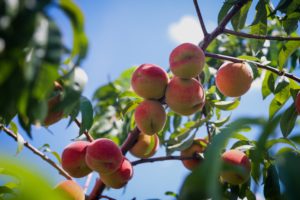
Neck and Shoulder Pain – the Traditional Chinese Medicine Approach
I often treat people suffering with neck and shoulder pain, however since lockdown I have seen the numbers rise significantly. I imagine this is a combination of more people working at home and therefore possibly not working with good postural positions alongside ongoing work related stress.
Neck and shoulder pain may be acute or chronic and affects the joints and their related soft tissue. There can also be swelling, numbness and pins and needles. Inflammation and degenerative joint disease might be a western medicine diagnosis. In TCM, if you are suffering with neck and shoulder pain, there are a few potential diagnoses we might make.
TCM’s model is concerned with the relationships and interaction of the whole body’s system. Maybe the presence of a pathogen (eg Wind or Damp) is interacting with the organ system’s function, creating a local problem in the joints and soft tissues. TCM also appreciates how interior, exterior and distant parts of a body can be linked through the channel system, using these connections to benefit both the tissue function and the structure of our bodies. Some of the diagnoses in TCM might include “dampness”, “cold”, or “heat”, “wind” “blood stasis” and “Qi and blood deficiency”. Often it is a combination of these diagnoses.
Waking up with a stiff neck with restricted movement will be diagnosed as “wind invasion”; that old classic “sleeping in a draughtt” is often the cause. Sometime I have patients coming for a routine follow-up treatment who mention they have woken up with a stiff neck. Almost like stage magic, needling an acupuncture point located on the back of the hand can restore full movement in the neck after the acupuncture needle has been in place for only a few minutes!”
A diagnosis of dampness might look like this: joint and muscle pain with a feeling of heaviness and numbness. The pain might feel worse when there is damp, humid weather. If It’s the shoulder that’s affected, it will be swollen with stiffness and reduced range of motion. TCM treatment aims to get rid of the dampness and move Qi and blood in the channels. There are several different prescriptions we might use here containing nice sounding herbs, such as Mulberry tree twig, Chinese Angelica root, cinnamon, apricot kernel, root ginger and date. Acupuncture points, as always when treating painful conditions, will include points in the affected area to help clear the problem, alongside points at the end of the channel (like opening up a junction on the motorway to clear a traffic jam). We will also use acupuncture points to clear dampness.
A diagnosis of “dampness” often develops into “cold-dampness”, causing more intense fixed pain in the joints and possibly also neuralgic pain. The range of motion is markedly reduced with more stiffness. Pain will be worse at night and with exposure to cold. Herbal prescriptions will include warming herbs. As the condition will be chronic, we are often using herbs to help address the underlying deficiency in the person’s body. This might include herbs such as white peony root and ginseng. Acupuncture treatment includes warming methods, such as moxibustion or infrared heat lamps to warm the area.
If there is a history of trauma, “Blood stasis” is a common diagnosis. Trauma might include an injury, but also can include surgery. A long-standing problem often develops into “blood stasis”. In these cases, pain will be fixed, stabbing and sharp, worse with activity, sleep and pressure. It probably won’t be influenced by the weather or emotional stress. The shoulder may also develop bony deformities and weakness. The skin probably looks dry and scaly and slightly discoloured. Completely different herbal formulas will be given in these case. The treatment focus is to “invigorate blood and move Qi, break up and dispel blood stasis”.
All the above diagnoses are considered to be “excess conditions”. “Deficiency conditions” are mostly diagnosed as “Qi and blood deficiency”. “Qi and blood deficiency” usually presents as dull aches and stiff dry creaky joints, or intermittent stiffness, dull pain with tingling and numbness. Pain is alleviated with rest and aggravated by use and movement, especially during cold weather. Patients are generally tired, look pale and feel weak. A patient’s tongue might also look pale, reflecting the blood deficiency. Chinese herbal prescriptions will include lots of herbs to help build up both Qi and blood, as well as disperse pain in the area affected. Warming herbs are also added to the prescription. Although these herbs might be similar to the prescriptions mentioned above, the doses will be higher and include more tonifying herbs overall. Herbs such as Ginseng, peony root, honey fried licorice, astralgia, ginger and warming cinnamon are often included. The acupuncture treatment will also include similar points to those used in the above conditions and points to help strengthen the body too. Formulas will be given in these cases.
At the Jade Centre we see many patients each year to help them to manage their chronic neck and shoulder pain. Contact us now and book an appointment to get the support you need,

